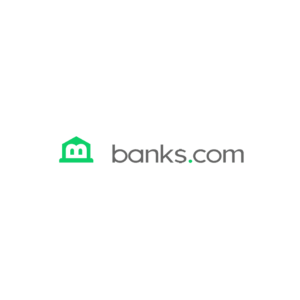Banks are vital financial institutions. Banks make it easy for people to store and access their cash. It’s a safer alternative than keeping your money under the rug and hoping you don’t get robbed. The Global Findex revealed that over 1 billion people have a bank account. Banks manage a lot of money, and it’s no wonder consumers have questions. Want to know what happens to your dollar after the bank receives it? Banking regulations impact what happens to that dollar and where banks keep your money.
How Banks Are Regulated in the U.S.
Banking regulations have a long history. Restrictions intensified as financial crises became common in the late 1800s and early 1900s. Since then, the Federal Reserve has imposed many regulations, including limits on how much money banks can lend. Banks must keep a minimum reserve so consumers can access their money when making withdrawals. Each deposit gives the bank more lending power, while each withdrawal restricts how much money a bank can lend. Regulations continue to change as the nation goes through economic cycles. For example, the subprime mortgage crisis led to the Dodd-Frank Wall Street Reform and Consumer Protection Act in 2010. Even more recently, the Biden Administration passed laws that have increased scrutiny on bank mergers and “excessive consolidation.”
Bank regulations help consumers feel more confident about their money. These safeguards also prevent banks from engaging in risky behaviors, particularly subprime lending. This form of lending contributed to the Great Recession and millions of foreclosures.
FDIC Insurance: What Is It and How Does It Work?
Putting money in the bank was scary in the early days. Some people lost their money when banks went insolvent. After enough crises, the Federal Reserve was established to reestablish trust in the banking system. The Federal Deposit Insurance Corporation was a critical part of regaining trust. This insurance policy protects up to $250,000 per bank account in the event of insolvency. The Fed fills your account with funds to cover the difference if the bank goes under.
A consumer with $500 in their account receives $500 from the Federal Reserve if the bank goes out of business. However, a consumer with $300,000 in their bank account only receives $250,000. The other $50,000 is gone. Therefore, you can create multiple bank accounts and ensure no balance surpasses $250,000 if you find yourself in that situation.
Where Do Banks Keep Your Money?
Banks have two choices for your money. They put most of the money in a local Federal Reserve Bank and keep the remaining cash in a vault. The vault helps banks provide customers with quick withdrawals while they earn interest on the money in a Federal Reserve bank.
How Do Banks Make Money?
Banks make most of their money from loans and fees. Consumers approach banks for mortgages, auto loans, and lines of credit. The bank taps into deposited reserves to fund those loans. Essentially, each deposit you make is a loan where you receive interest.
The Federal Reserve establishes limits on how much banks can lend to avoid overextensions and liquidity issues. Banks make money on interest payments. A higher interest rate increases the bank’s earnings, but setting rates too high will decrease the number of loan applications. Banks generate additional revenue through fees. Overdraft fees, late payment fees, loan origination fees, and excessive transaction fees are some of the common expenses passed onto consumers. Consumers have more ways to minimize banking fees, and it’s worth exploring all options before making additional deposits.
The bank’s business model relies on many consumers depositing money. They will offer perks and work to build your trust so you make more deposits and keep your cash tucked away in the bank.
Credit Unions vs. Banks vs. Financial Technology Companies
You can store your money in credit unions, banks, or financial technology companies. Credit unions are the only choice on the list operating as non-profits. They have lower fees and interest rates on their loans than commercial banks. However, credit unions have fewer locations and may not even have mobile apps. This limited accessibility is a major weakness for credit unions.
Financial technology companies improve on both entities’ advantages. Although financial technology companies are for-profit enterprises like traditional banks, they have less overhead. Fintech companies do not have to pay for branches and employees to manage those branches. These savings translate into higher interest rates and lower fees for their users.
Fintech companies prioritize the tech side and often have more features than traditional banks. Some fintech companies act as an all-in-one solution, letting you invest, save money, see spending insights, and get other data from a single source. Unfortunately, most traditional banks have not kept up with fintech solutions to offer mobile users a suite of financial products and services.
How to Make the Most of Your Bank Deposits
The banking industry generates billions of dollars from deposits every year. They make interest on loans and charge several fees. Consumers earn interest by lending their money to the bank. Understanding your influence as a consumer can help you get the most out of your bank deposits. You can use the following strategies to increase your return on money sitting on the sidelines.
Open a High-Yield Savings Account
A standard savings account provides the lowest interest rate. You won’t make much money keeping your funds in this account. Opening a high-yield savings account increases your earnings potential. Certificates of deposit offer a risk-free return on your capital. You have to keep your money in this account for several months or years, depending on the maturity date. You can choose the maturity date before putting your money into a CD. A lengthier term provides higher interest rates. You can also use money market accounts to earn a high yield on your savings. These accounts typically have lower rates than CDs, but you can withdraw your money anytime.
Opt for Online Solutions
Online banking is an enhanced solution for consumers who want to earn a return on their deposits and fortify their finances. Online banks have less overhead and can pass their savings to consumers. It’s the reason why online solutions can offer more bonuses for their savings accounts.
Invest Your Money
Your money can earn a decent return from online bank interest rates. Some people want more than a 4% APY on their funds and look at investment opportunities. You can invest your money into stocks, real estate, crypto, and other assets to earn a high return on your investment.
Each investment comes with strengths and weaknesses, and assessing the pros and cons is essential before putting your capital to work. Investments do not generate risk-free returns. While you can make substantial returns with the right investments, you can also lose some or all of your money on other assets. Each investment will help you develop preferences and identify your risk tolerance. You can also invest money in a retirement account to save money on taxes. Most people invest their way to early retirements, but you have to decide how much you’ll risk and which assets you will buy.







